Studio Job’s House of Delft is the Netherlands’ biggest, craziest artwork
Designer Job Smeets of Studio Job invites us into his atelier to see work in progress for his surreal 2,000 sq m ode to the Dutch city of Delft
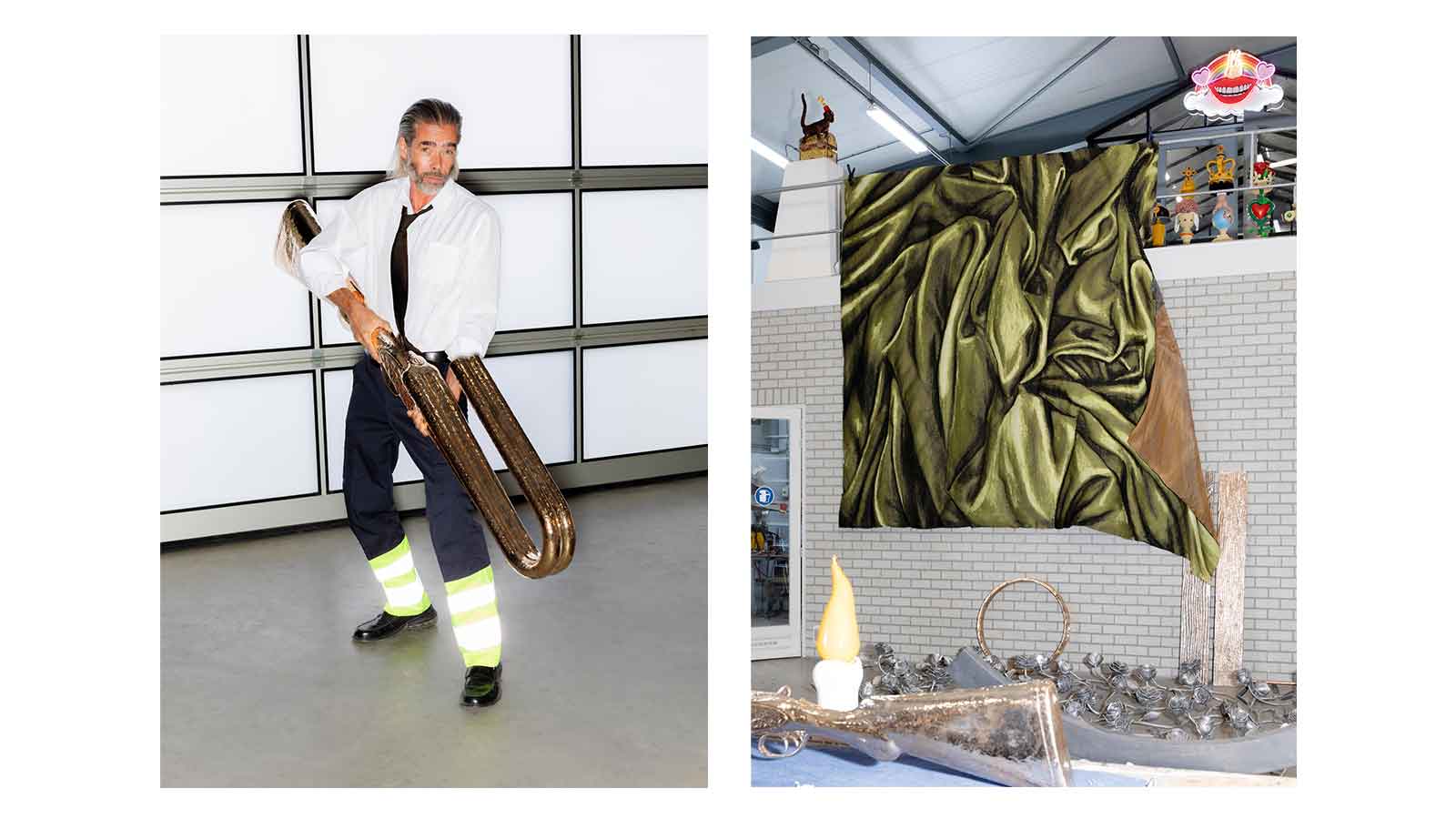
Some artists treat fabrication as a means to an end; Job Smeets is not one of them. He likes to get his hands dirty. His work is loaded with conceptual metaphors, but he speaks most passionately about the tactility of majolica, the plasticity of bronze or a wall tapestry’s interlaced warp threads. Since founding Studio Job in 1998, the Belgian-born designer has sculpted and moulded a language of his own that hovers somewhere between ornate sculpture and pop-influenced design, folkloric and kitsch. His work has both fans and critics, but no one has ever questioned his material prowess or the sincerity of his craftsmanship.
We visited Studio Job weeks before the October 2025 soft opening of House of Delft – at 2,000 sq m, the largest commission of Smeets’ career. When completed (before its official inauguration in October 2026), it will also be the largest artwork in the Netherlands, surpassing the 1,680 sq m Panorama of Scheveningen by Hendrik Willem Mesdag in The Hague.
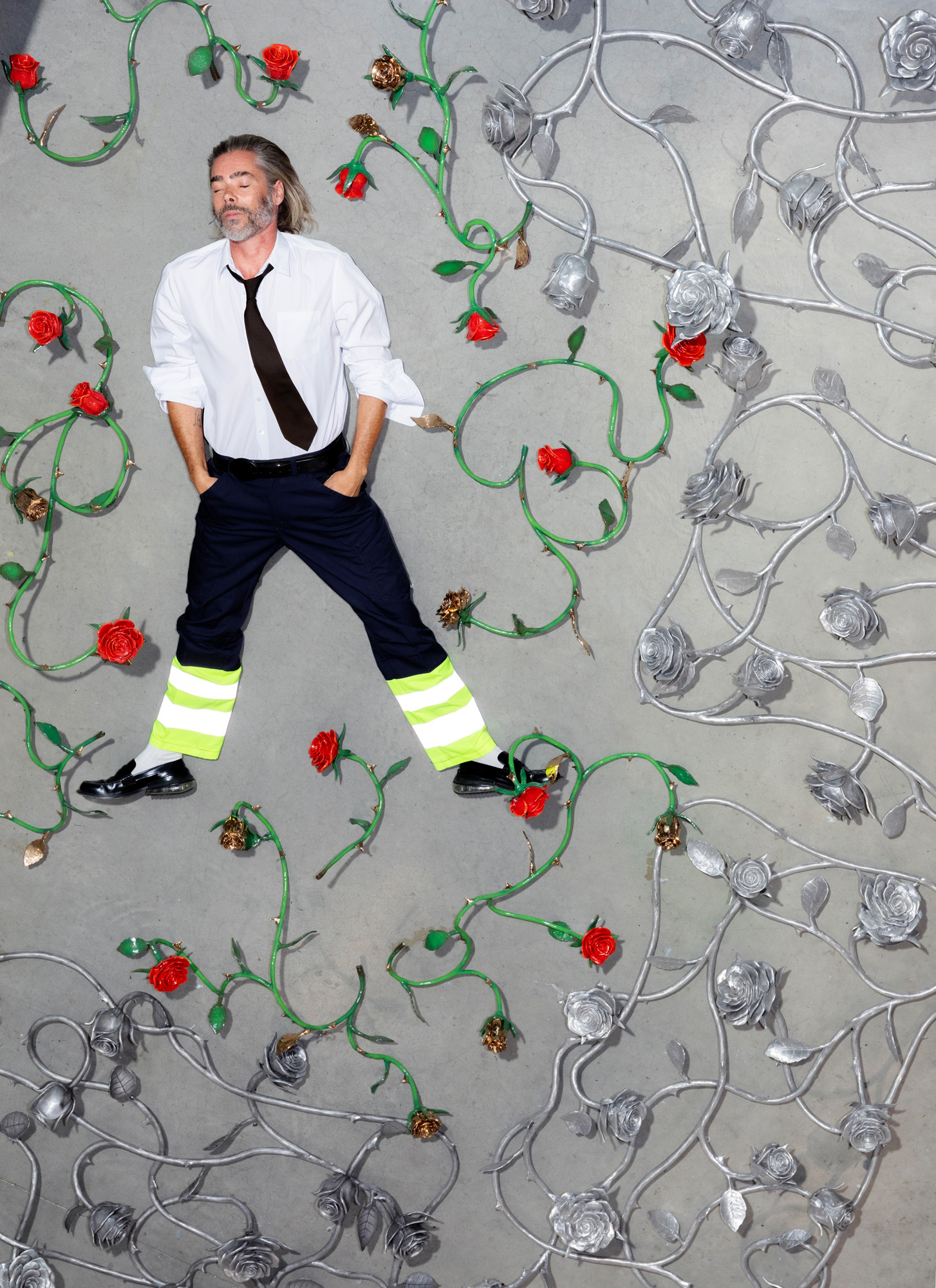
Smeets at his studio
House of Delft encompasses three galleries in a Frits van Dongen-designed building of the same name (where work in progress is viewable from the street and, as of this week, tours can be booked for the first gallery). Like Richard Wagner’s Der Ring des Nibelung, it is a Gesamtkunstwerk (total work of art) comprising interconnected forms, including 120,000 tin-glazed tiles, a 40m tapestry and a 7m-high stained-glass window.
The work’s technical complexity and fantastical imagery make it feel like a contemporary reboot of Hieronymus Bosch’s The Garden of Earthly Delights. Like Wagner’s operatic cycle and Bosch’s triptych, House of Delft is a grandiose vision that takes multiple viewings to unravel. Fortunately, visitors can decode House of Delft’s dense symbolism 24 hours a day through enormous ground-floor glass panes. The artwork is a gift to the city of Delft by billionaire native son Chris Oomen.
‘It came at a perfect time in my life. Ten years earlier, I could not have done it,’ Smeets says. ‘A project of this size and complexity is beyond the capabilities of a single artist. It would have taken me an entire lifetime.’
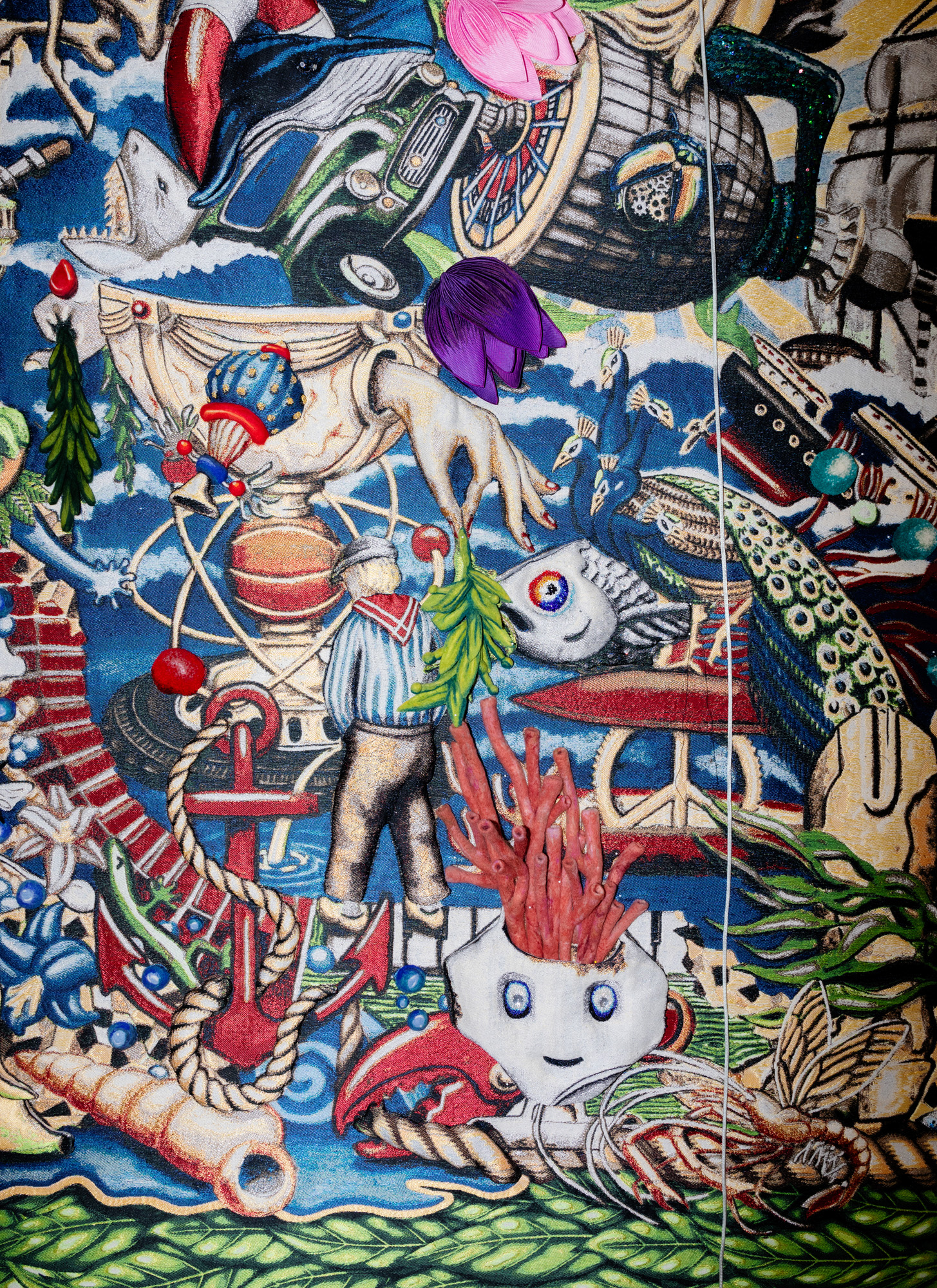
Je Moet Streven Naar een Minimum wall tapestry, 2024-25, for the Jan Schoonhoven Theatre for House of Delft
Arguably, preparation for House of Delft began in 2019 when, a few years after splitting up with his life and studio partner, Smeets set about transforming his atelier into a sort of renaissance workshop. He sought out the best illustrators, sculptors, casters, weavers, painters and metallurgists, and convinced them to join him. ‘I spent years assembling this incredible pallet of skills and talent, and this was one of the rare opportunities where I could use them all in a single work.’
But unlike practice at the factorylike studios of many contemporary artists, Smeets is still very much involved in the physical execution of his ideas. A prolific illustrator, he begins every work with his pen.
Receive our daily digest of inspiration, escapism and design stories from around the world direct to your inbox.
When not fronted by his Mercedes 450 SE, pimped with bronze emblems of his own making, Smeets’ Tilburg atelier is easy to miss amid the drab industrial landscape. Inside, however, it is a bright, bronze-filled space whose order and calm seems to clash with the whimsical ornamentation and erratic structures for which Studio Job is known. Save for the stacked plaster moulds, a giant glitter globe and a controversial artwork featuring two smoking chimneys inspired by Jake and Dinos Chapman’s Hell, everything on display – including a bed of hand-painted waterlilies, an enormous clown’s shoe and a sculpture of a virus – belongs to House of Delft.
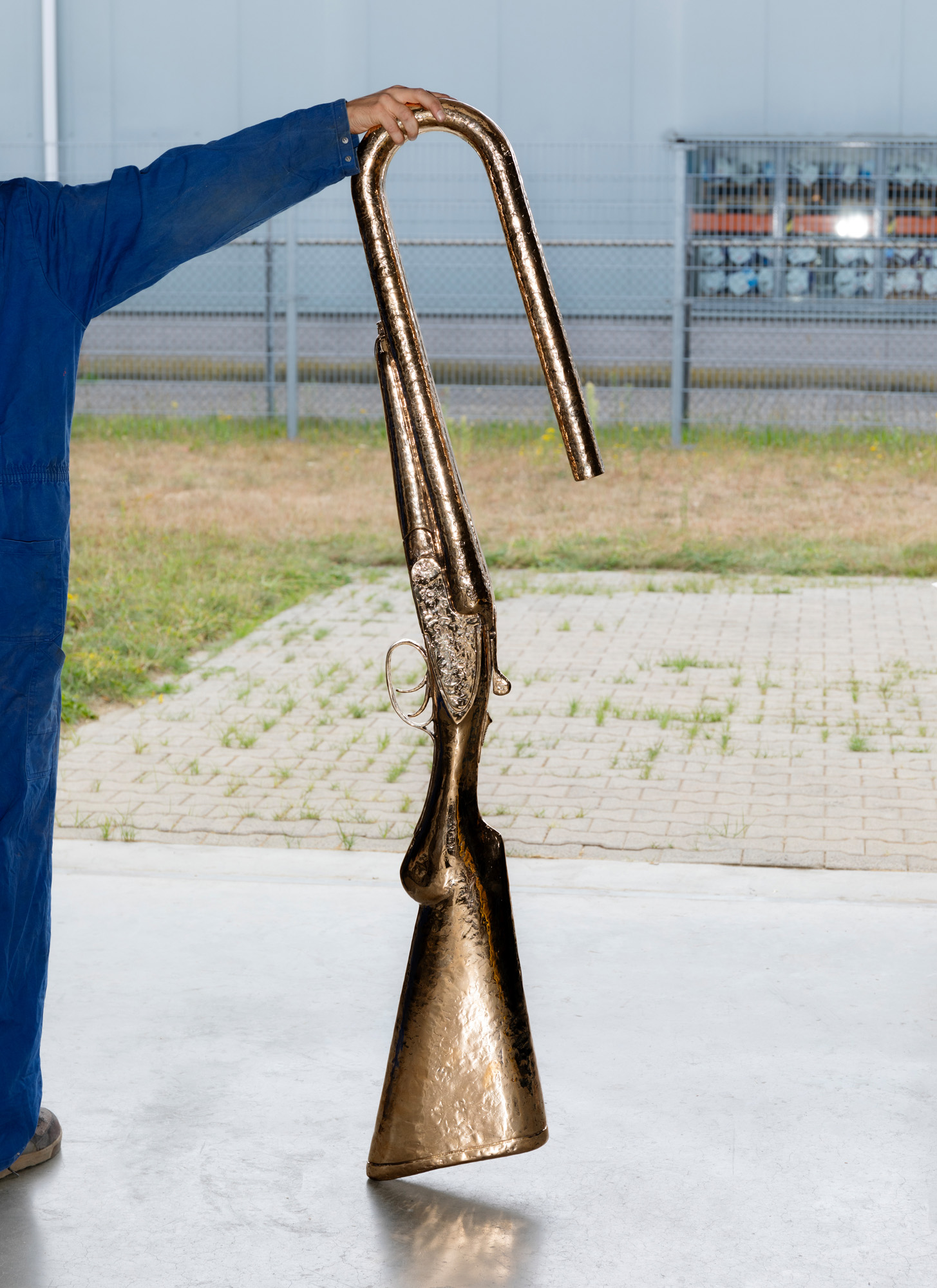
The Hemingway, 2023-24, for House of Delft

Eldorado, 2020, for The American Job, with a member of the Studio Job team
For the past five years, around 50 artists, artisans and constructors have contributed significantly to House of Delft, including textile engineers at Tilburg’s Textile Museum and glazing specialists at Royal Tichelaar Makkum, both world-class institutions and long-time Studio Job collaborators. What can be done at the studio is done at the studio.
‘It literally feels like I have been lying on my back for five years painting the Sistine Chapel’
Job Smeets
There is a station for knitting upstairs, large metal and woodworking shops below. Three women balance on scaffolding while sewing three-dimensional aliens and ice cream cones on to an elaborate tapestry. Occasionally, they glance at scale models for guidance.
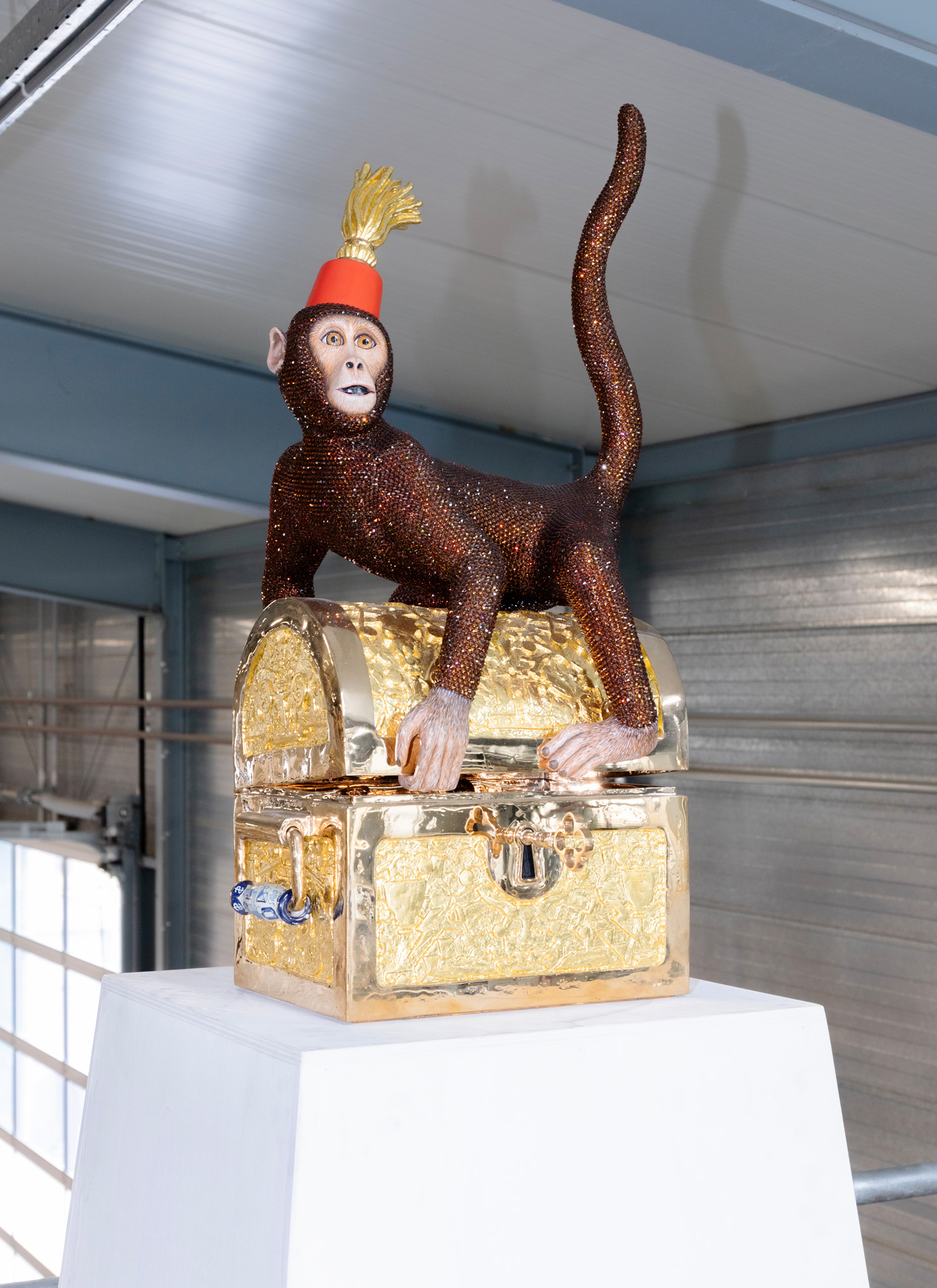
Monkey Business, 2013
‘I have always been fascinated by the total designs of cathedrals and castles, with their fully integrated ornamentation and storytelling,’ says Smeets. ‘This is my attempt to do something similar. It literally feels like I have been lying on my back for five years painting the Sistine Chapel. Every millimetre has a story of its own.’
‘I think it’s important for an artist to add their own signatures. Or maybe it’s just exhibitionism’
Job Smeets
House of Delft is an homage to the rich history of Delft, which, Smeets notes, was the Silicon Valley of its day, a Dutch golden-age hotbed of scientific and artistic innovation that birthed the microscope, Delftware and Vermeer. But House of Delft is also a Studio Job production, with its earnest morphing of fact, fiction and human folly. Future historians will scratch their heads trying to decipher the connection between cherubs and hotdogs, denim-clad nobles and the rear end of a Cadillac Eldorado Biarritz.
In Studio Job’s surreal world of warped time and space, Antoni van Leeuwenhoek, Delft’s 17th-century father of microbiology, is on equal footing with Boyan Slat, the city’s 21st-century inventor of a system that removes plastic from the ocean. The only person who understands these relationships is Job himself, and often he doesn’t get them, either.
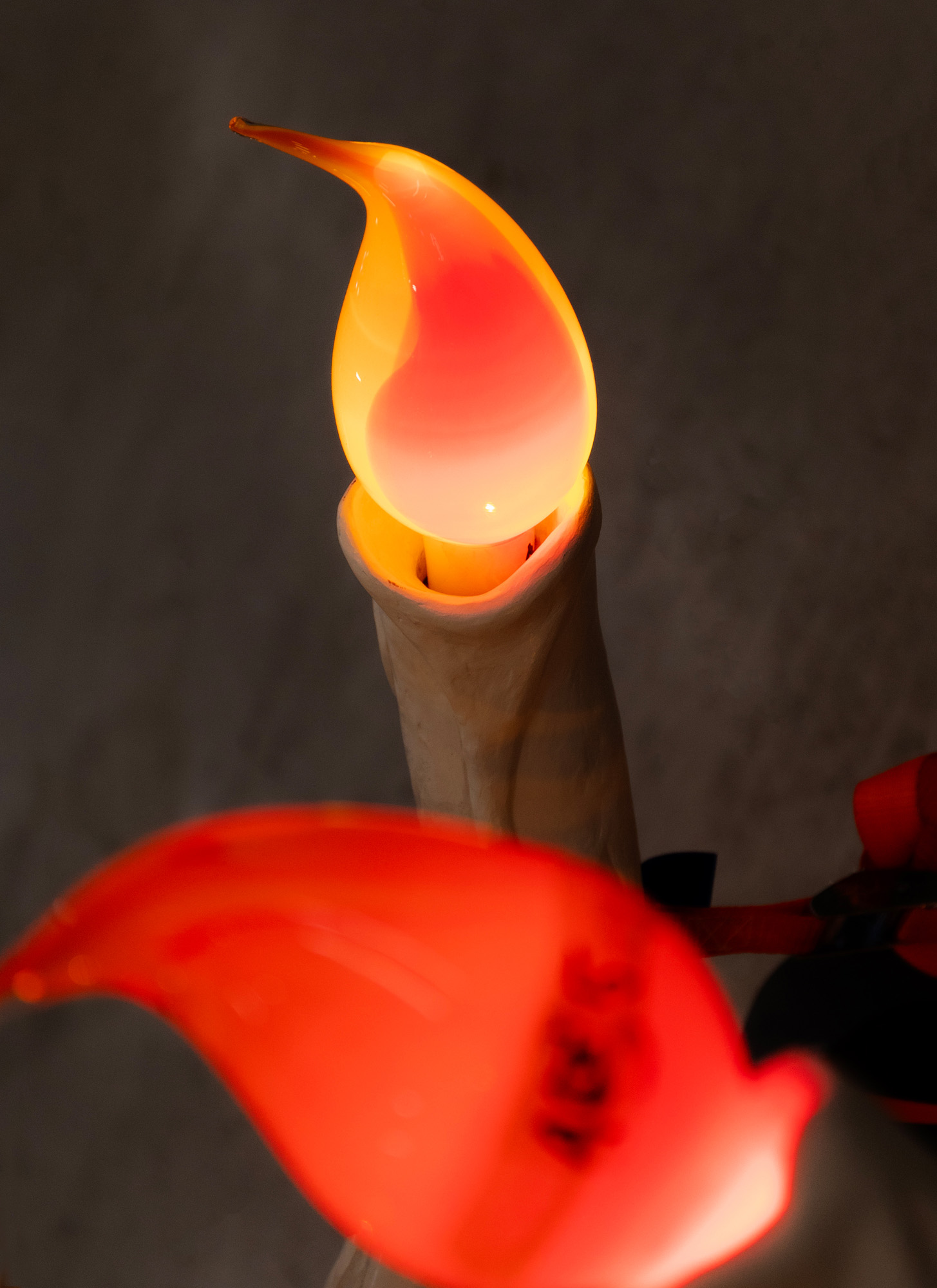
Handblown glass flame from Upside-down tulip vase chandelier, 2022-25, for the Constantijn Huygens Gallery for House of Delft
‘I’ve included sculptures that represent me as an artist, self-portraits. Crazy stuff like a bent gun, a clown shoe, an apple tree. Moments and memories. I think it’s important for an artist to add their own signatures. Or maybe it’s just exhibitionism.’
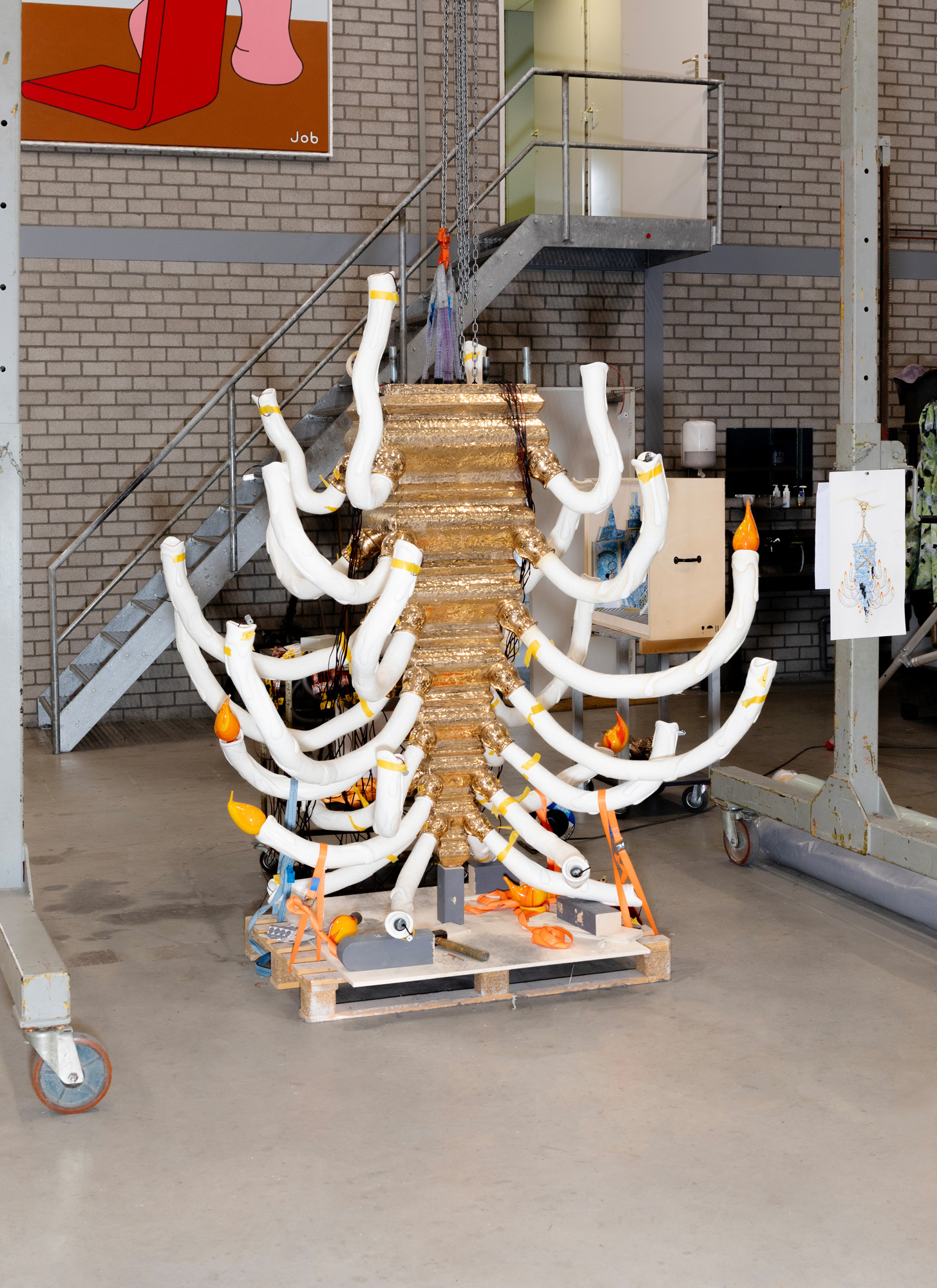
Upside-down tulip vase chandelier, 2022-25, for the Constantijn Huygens Gallery for House of Delft
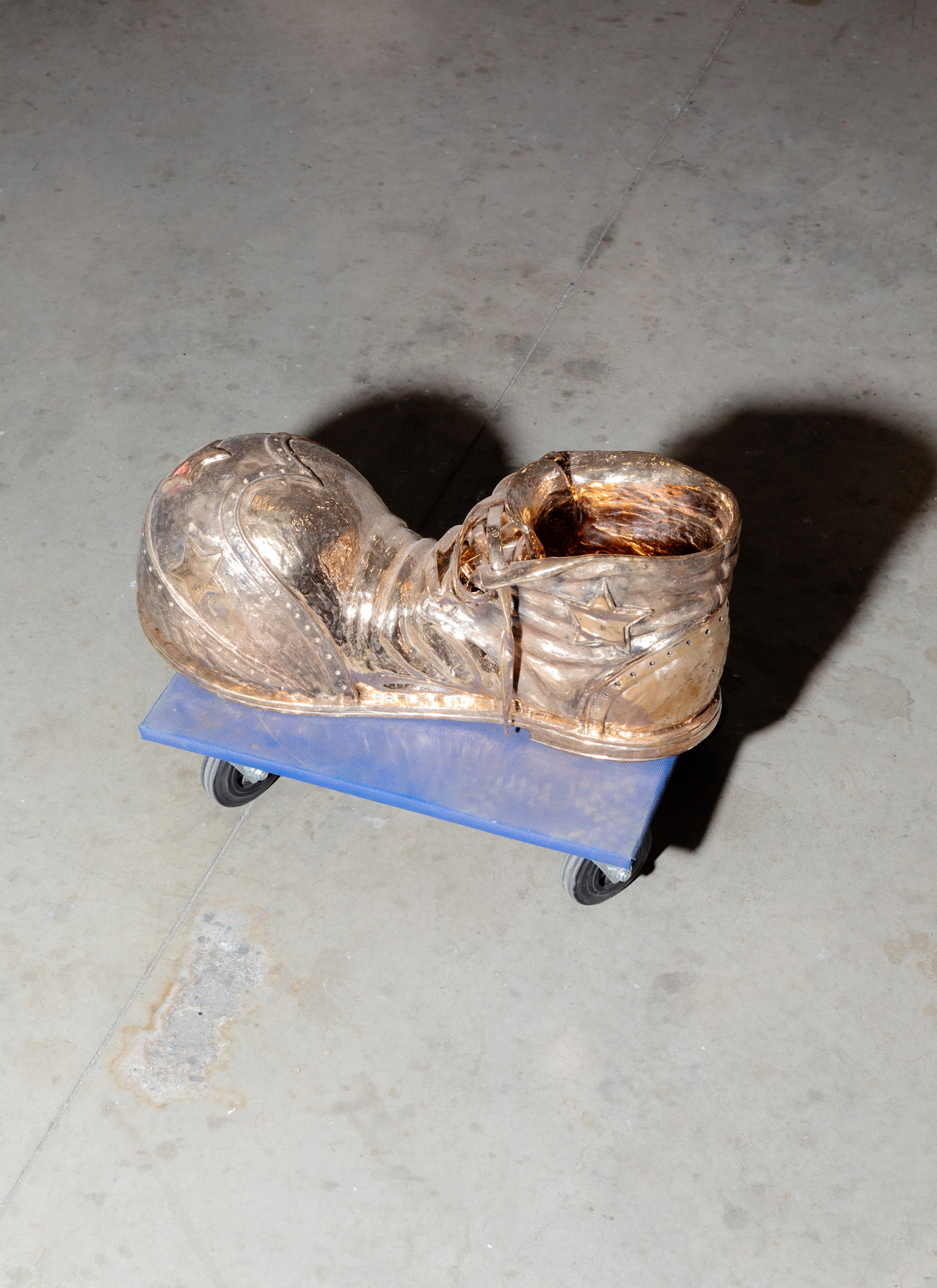
Pipo the Clown Shoe, 2023, for the Jan Schoonhoven Theatre for House of Delft
Delightfully, there are a number of recurring Studio Job themes in House of Delft, such as kooky clockwork, oversized hot lips and a pageant of heavy machinery. True to form, the work is a composition of stark contrasts – medieval and modern, wool and bronze, handmade and 3D-printed, upside-down and right-side-up.
A scene depicting a 1654 convent explosion (the ‘Delft Thunderclap’) is offset by Dutch ships conquering whitecaps at sea. There are references to wealth, but also the slave trade that helped fuel the embarrassment of riches. Johannes Vermeer baroque in one gallery gives way to Jan Schoonhoven minimalism in another. Enigma is often the whole purpose. Why is a giant caterpillar devouring a bridge? Is the stained-glass glow another explosion or a beautiful sunrise? Some will see commentary on today’s climate apocalypse in the many fires and floods, but tumult and chaos have been Studio Job motifs for decades.
‘I feel the world lives in 80-year cycles of destruction and resurrection,’ he says. ‘Horror and gloom, but also discovery and light. This is the history of humanity, and it’s all a little bit gothic. I’ve always found inspiration in that.’
Of the three galleries that make up House of Delft, the auditorium is the artist’s favourite, perhaps because of its challenging acoustic demands. In addition to three-dimensional acoustic tiles lining the walls, Smeets created two ornate tapestries. The ceiling tapestry ripples in cartoonish fashion, ruffled by a Caterpillar bulldozer.
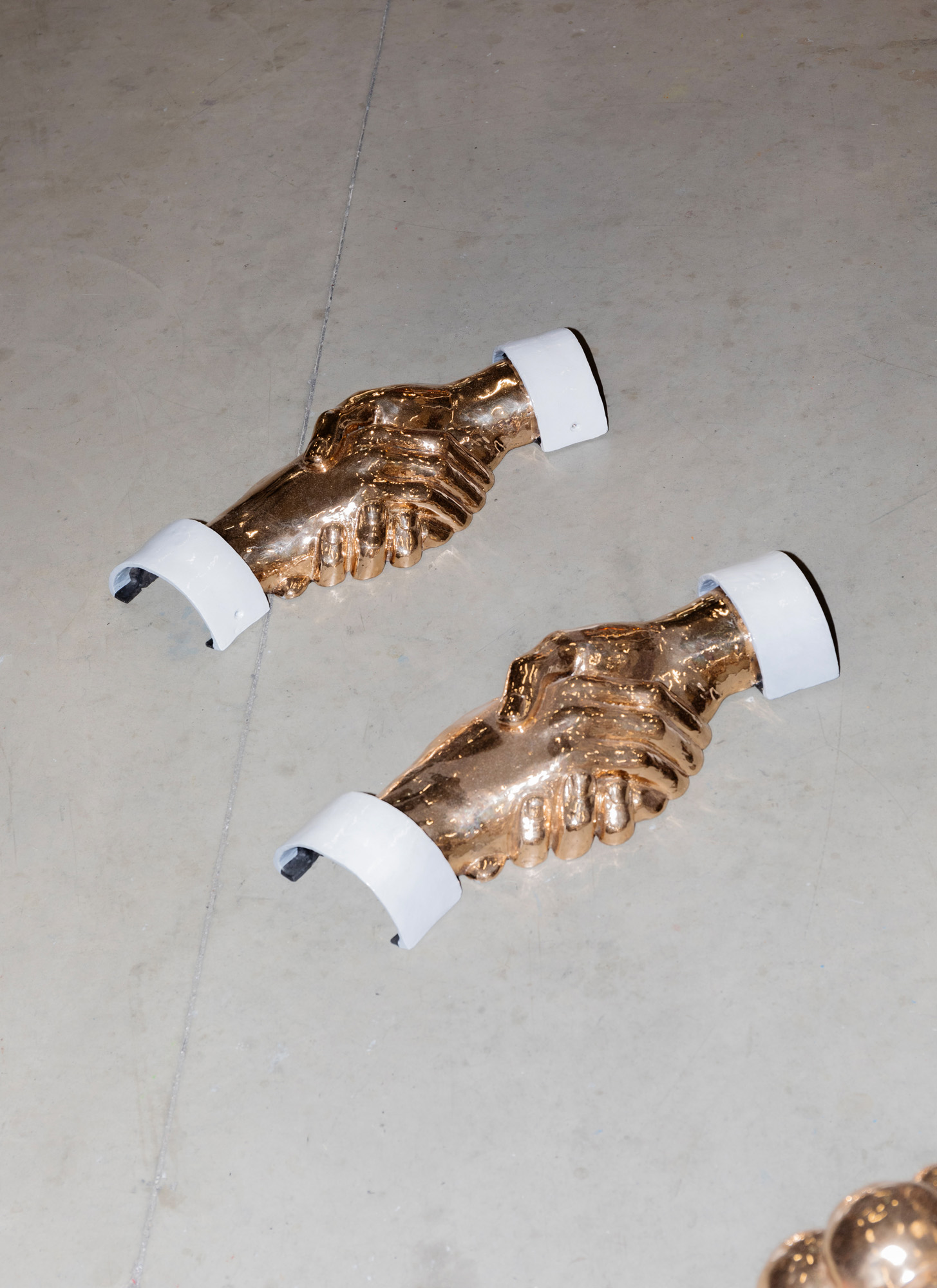
Rather than opening as a completed work, House of Delft remains a work in progress whose installation is in full public view. Smeets actually prefers it that way. ‘You know, they’ve been working on the Sagrada Família for something like seven generations, but now that it’s nearly completed, it’s just not that interesting anymore,’ he says. ‘I like the idea of the public interacting with the studio while we are laying tiles or hanging stained-glass. I think then they’ll see that House of Delft is not one artwork but hundreds of artworks working together. Each has a specific role to play. I’m just the conductor.’
Contact the Delft Tourist Office (within the Huis van Delft building) to tour House of Delft as the three spaces are finished and open ahead of the full launch in October 2026; the first space is now available to view, and work in progress can also be seen from outside.
studio-job.com
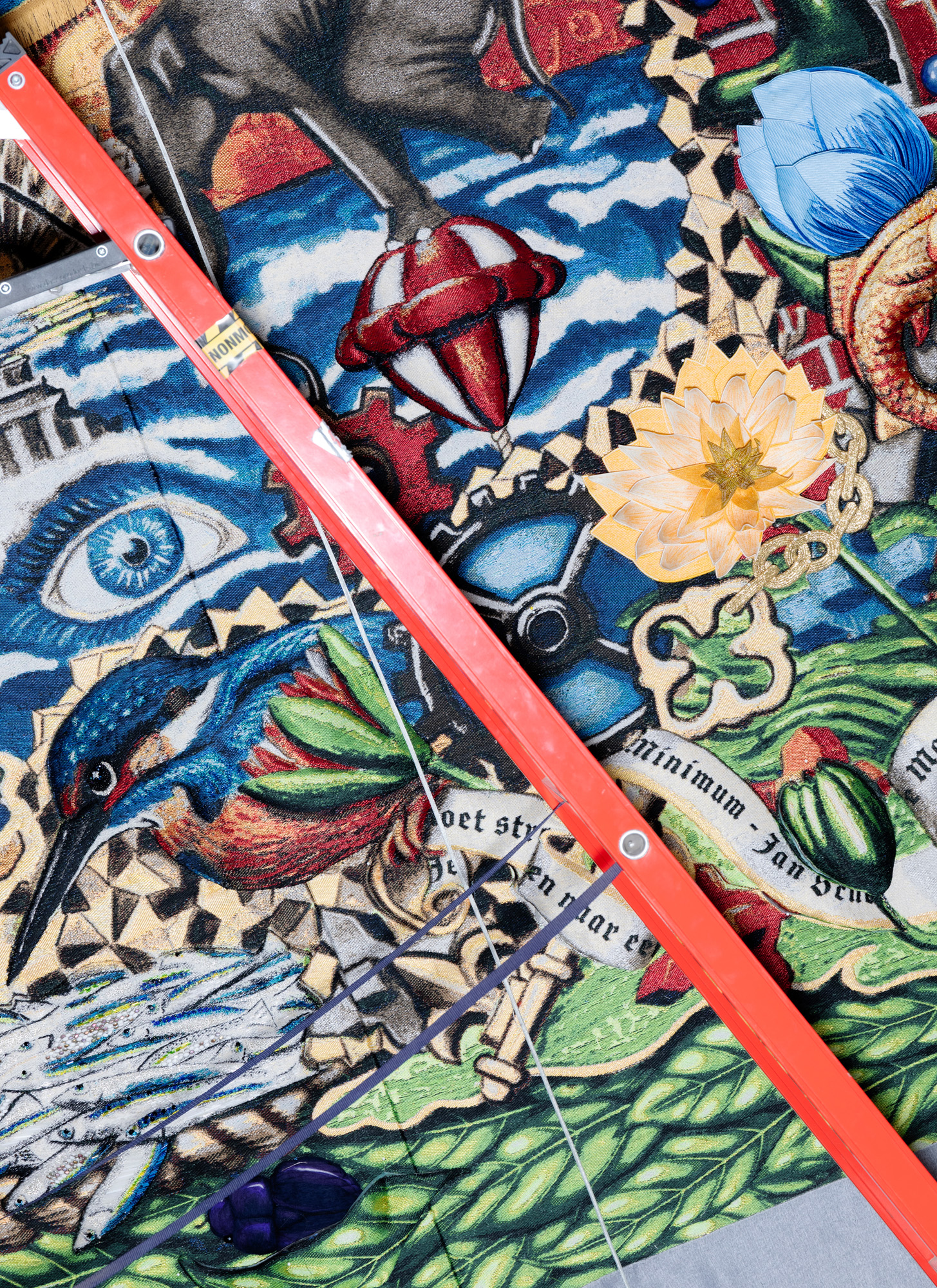
Je Moet Streven Naar een Minimum wall tapestry, 2024-25, for the Jan Schoonhoven Theatre for House of Delft
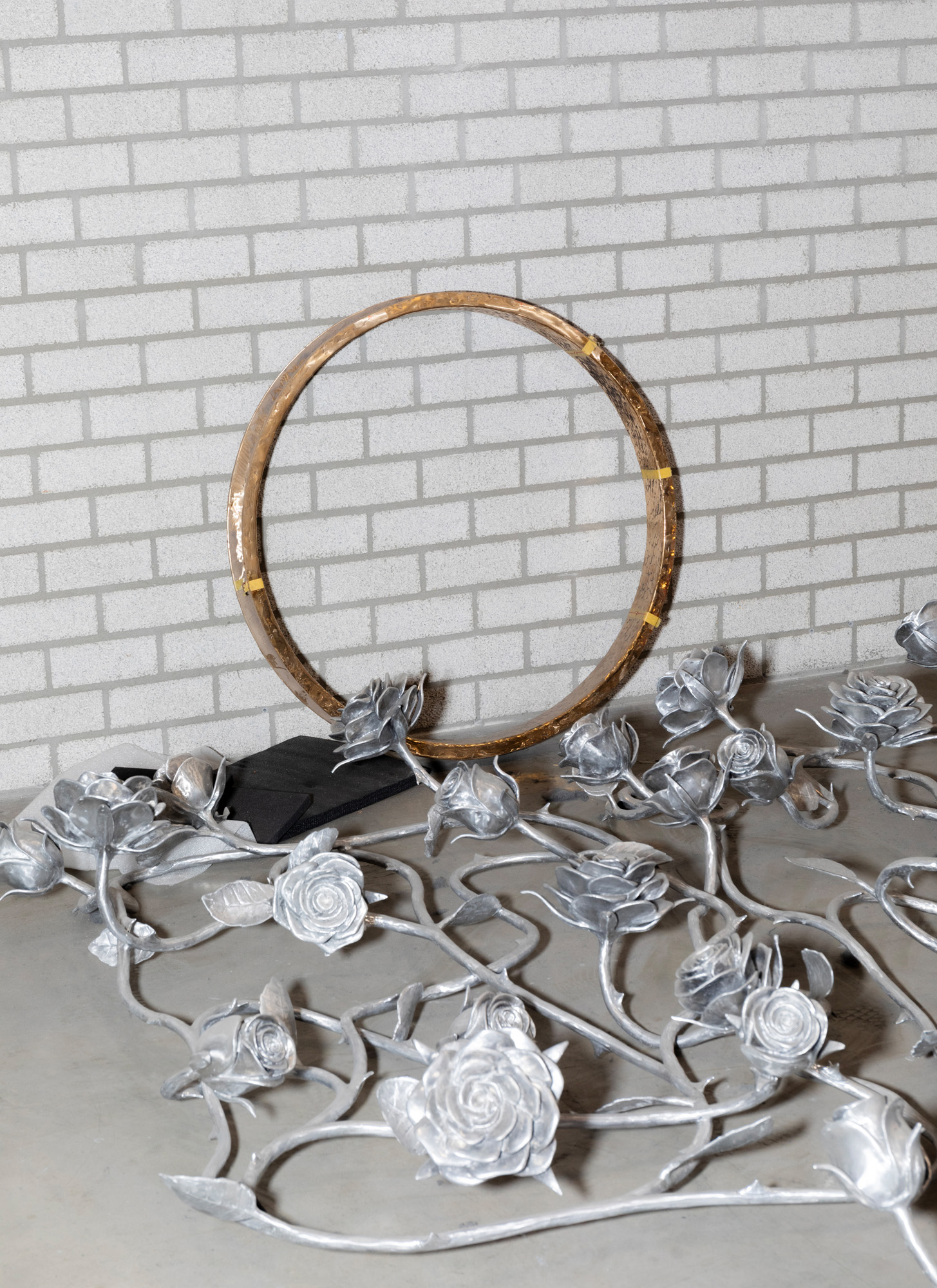
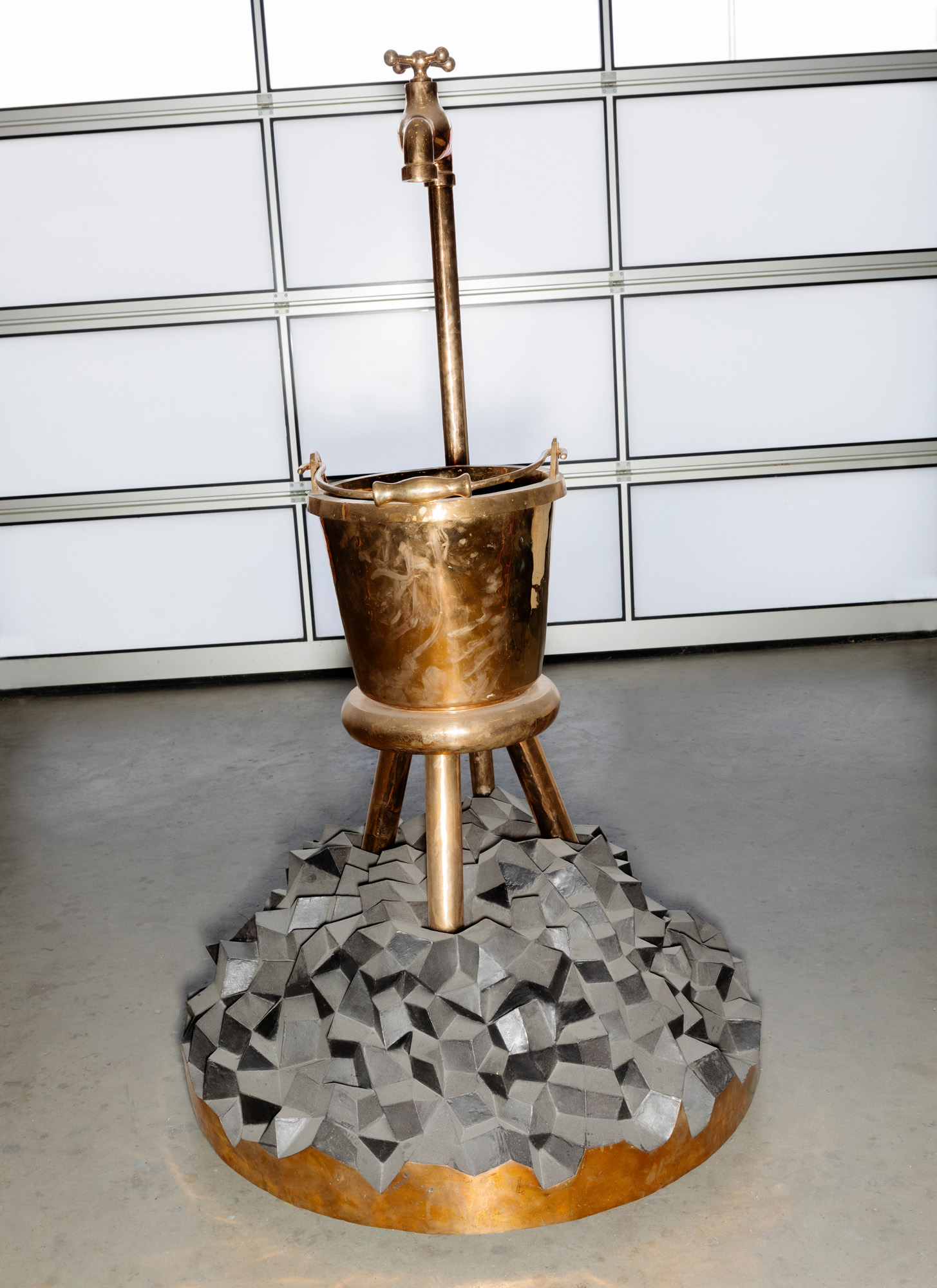
Fountain II, 2010
John Weich is a former travel editor of Wallpaper* magazine and has been contributing to the magazine since 1999. He is the author of several books, including Storytelling on Steroids, The 8:32 to Amsterdam and Ballyhooman, and currently writes, podcasts and creative directs from his homebase in The Netherlands.
-
 In BDSM biker romance ‘Pillion’, clothes become a medium for ‘fantasy and fetishism’
In BDSM biker romance ‘Pillion’, clothes become a medium for ‘fantasy and fetishism’Costume designer Grace Snell breaks down the leather-heavy wardrobe for the Alexander Skarsgård-starring Pillion, which traces a dom/sub relationship between a shy parking attendant and a biker
-
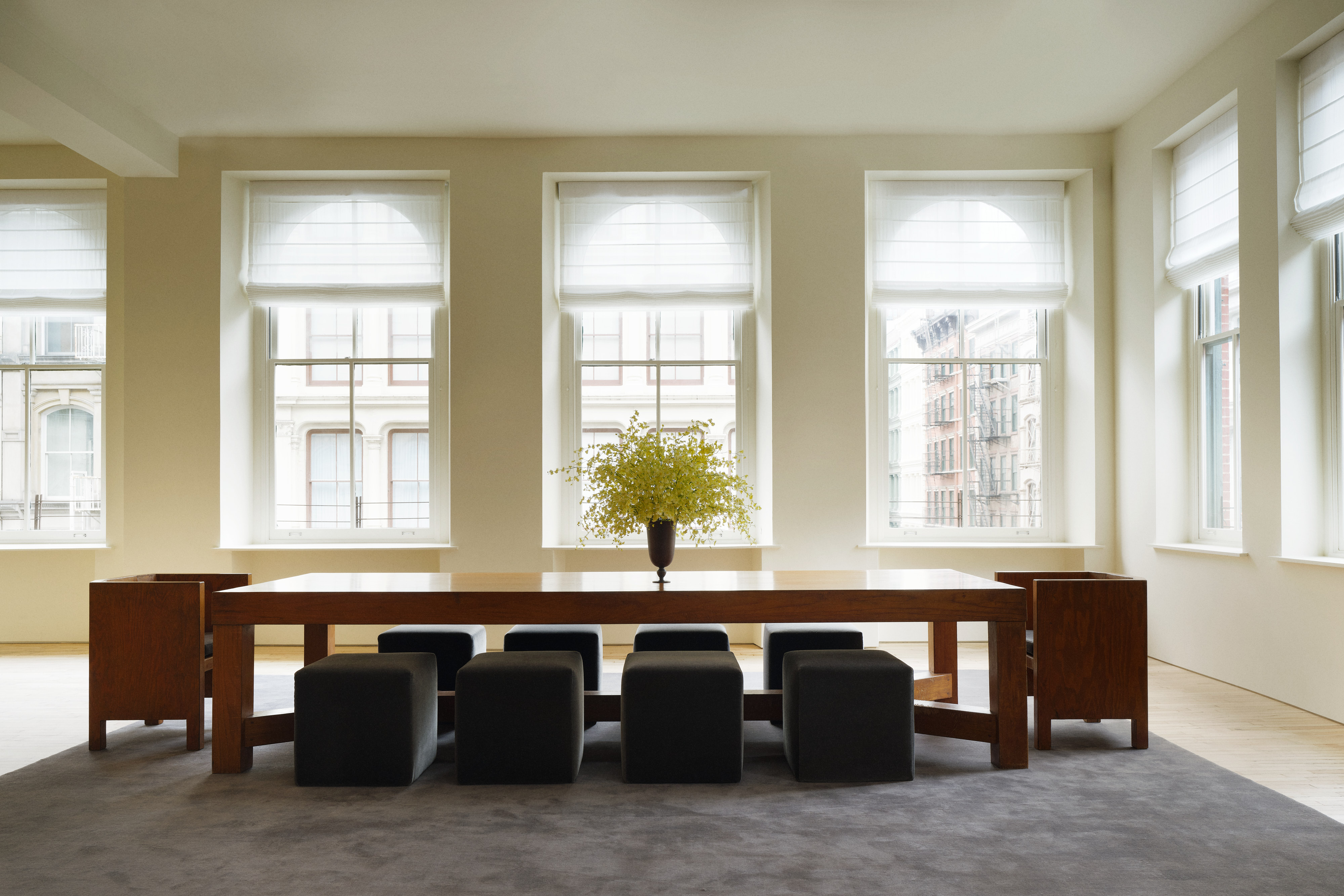 Tour Aflalo’s first retail space, a gallery-like studio in New York
Tour Aflalo’s first retail space, a gallery-like studio in New YorkLight-filled and elegant, Aflalo has opened its first retail space in a classic Soho loft, reimagined by Nordic Knots Studio
-
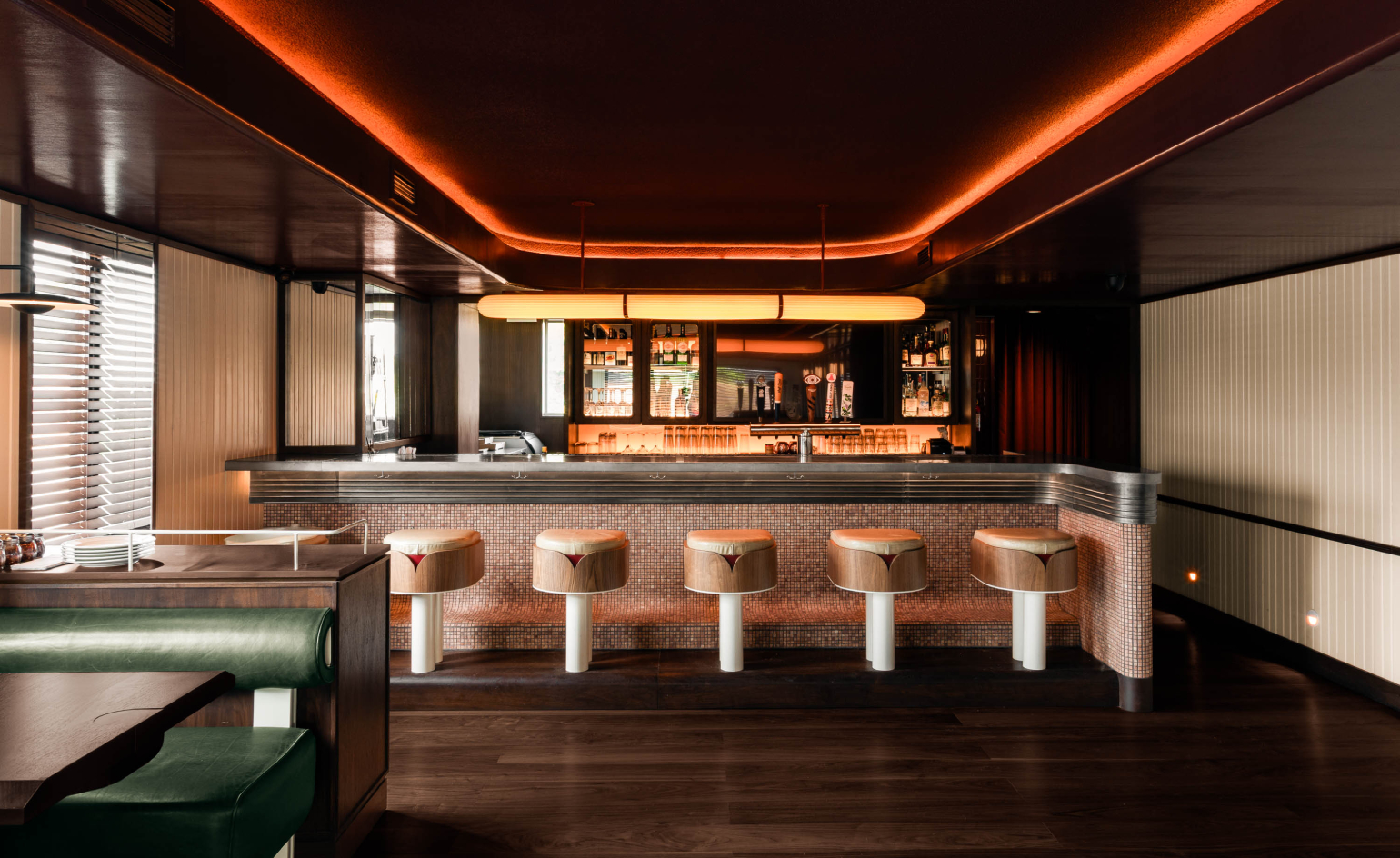 This Toronto pizzeria hides a sultry bar with serious bite
This Toronto pizzeria hides a sultry bar with serious biteNorth of Brooklyn unveils a fresh, two-level outpost where crisp, light-filled minimalism gives way to a warmer, neon-lit upstairs area
-
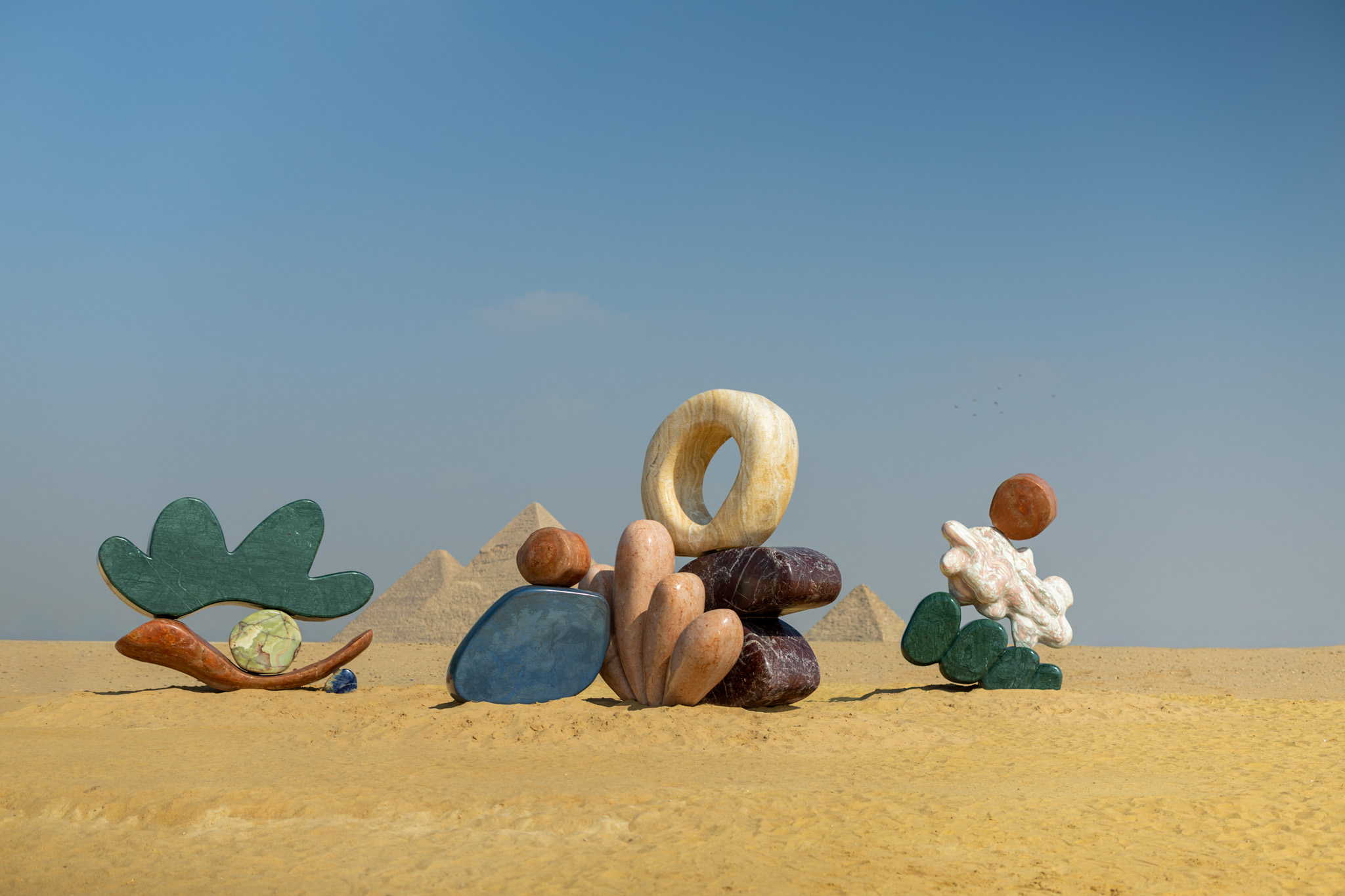 The Pyramids have a rival – monumental stone sculptures pop up in Giza
The Pyramids have a rival – monumental stone sculptures pop up in GizaOn the Giza Plateau, as part of Art d’Egypte’s ‘Forever is Now 05’, Studio Proba and SolidNature unveil sculptures celebrating geological colour, structural ingenuity and calibrated form
-
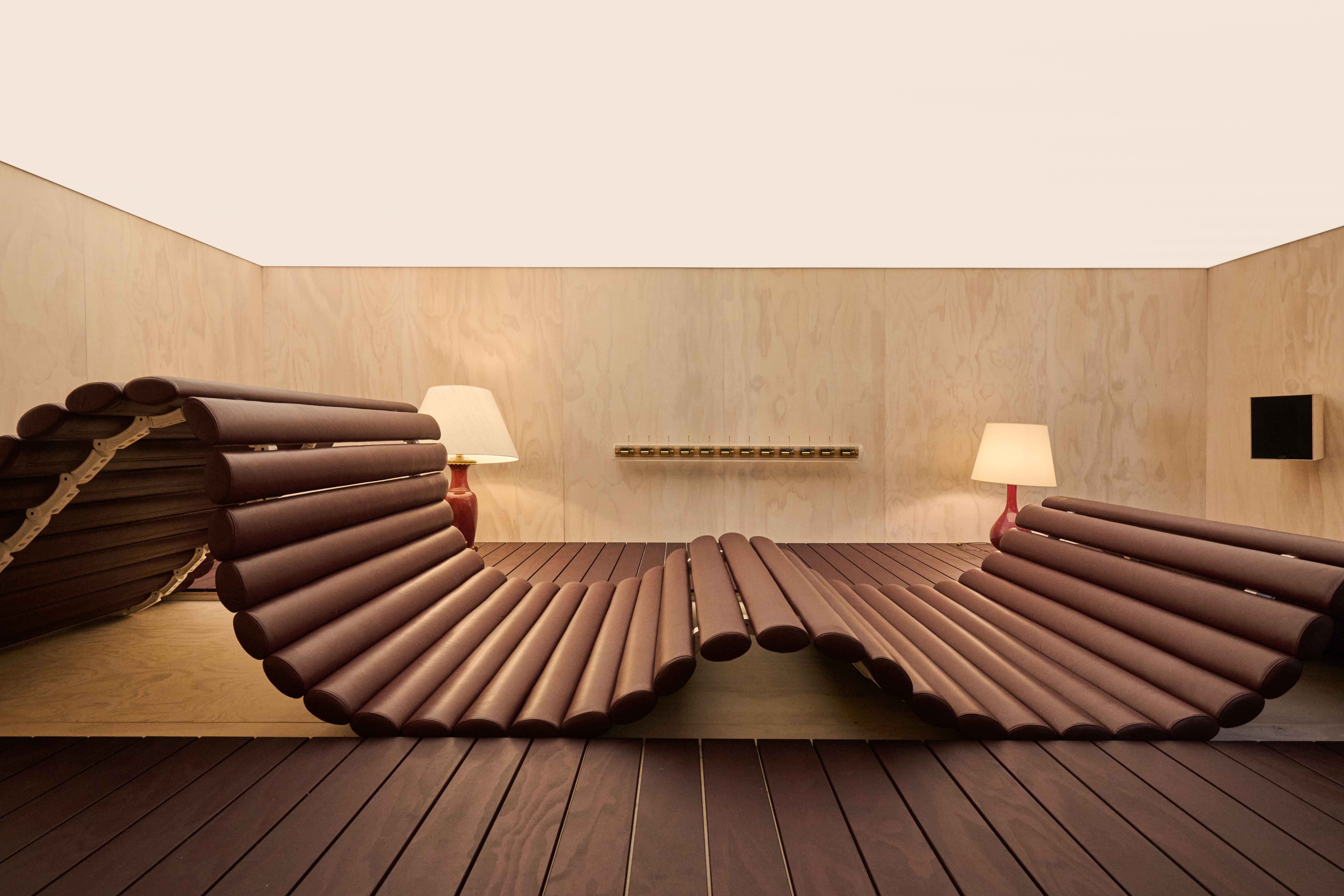 Best of Design Miami Paris 2025: animal sculptures and musical ping-pong tables
Best of Design Miami Paris 2025: animal sculptures and musical ping-pong tablesDesign Miami Paris returns to the Hôtel de Maisons (until 26 October 2025): here are the Wallpaper* highlights
-
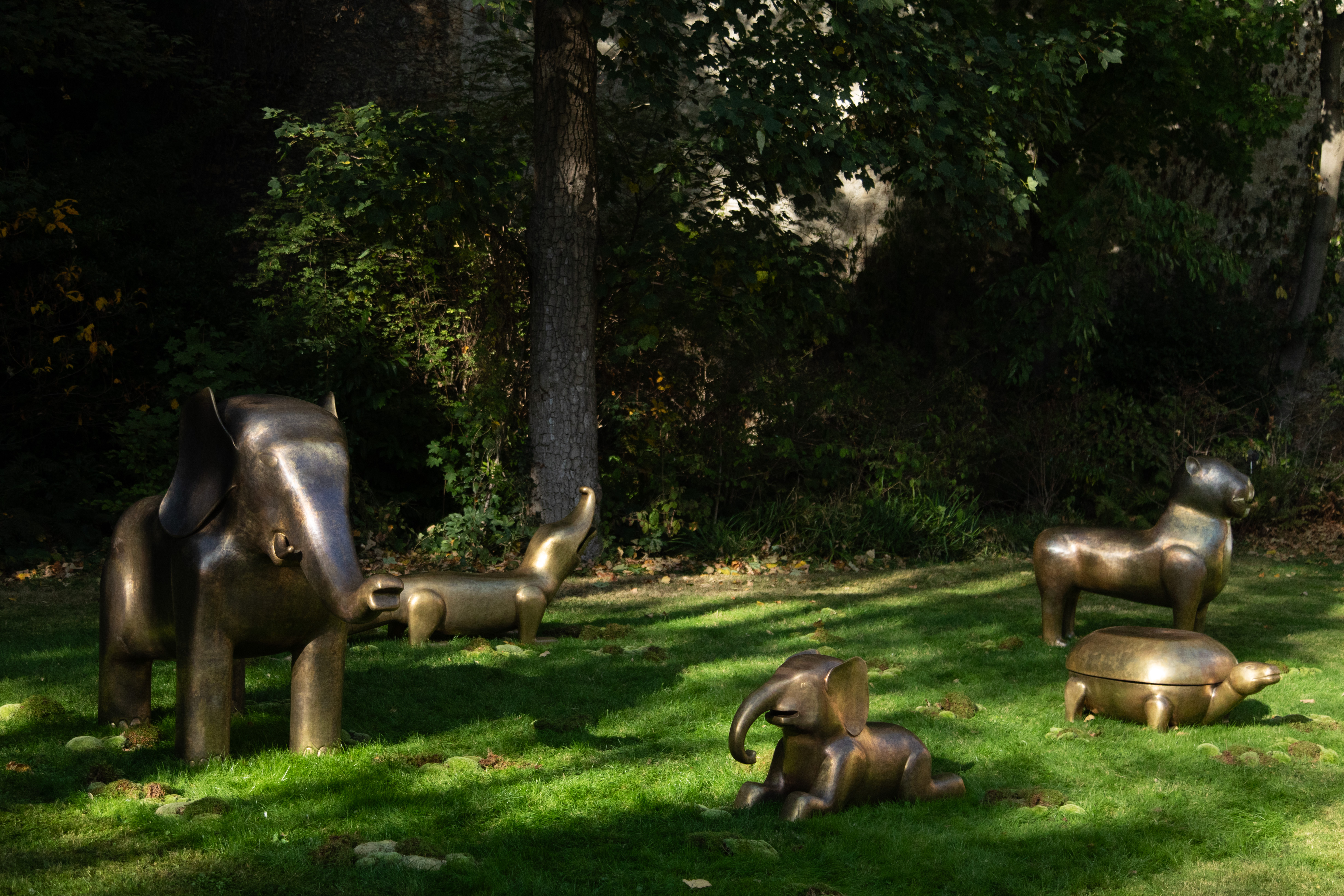 At Design Miami Paris, an artful menagerie tells a story of scent and nature
At Design Miami Paris, an artful menagerie tells a story of scent and natureVikram Goyal and Sissel Tolaas present ‘The Soul Garden’ at Design Miami Paris (until 26 October 2025), ‘a contemporary fable where the animals take new forms, reimagined for the world we live in today’